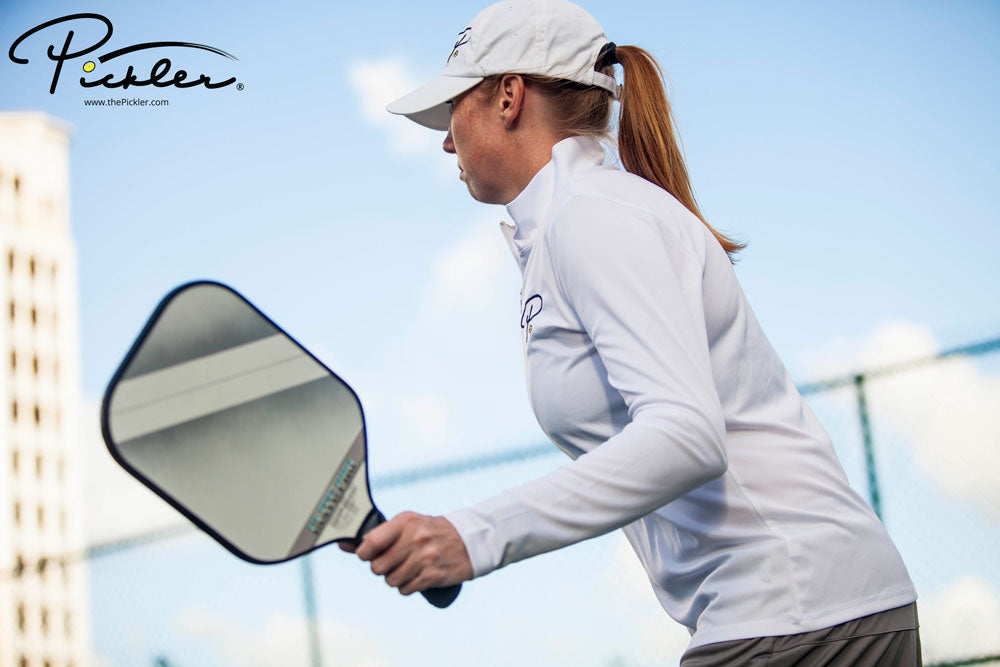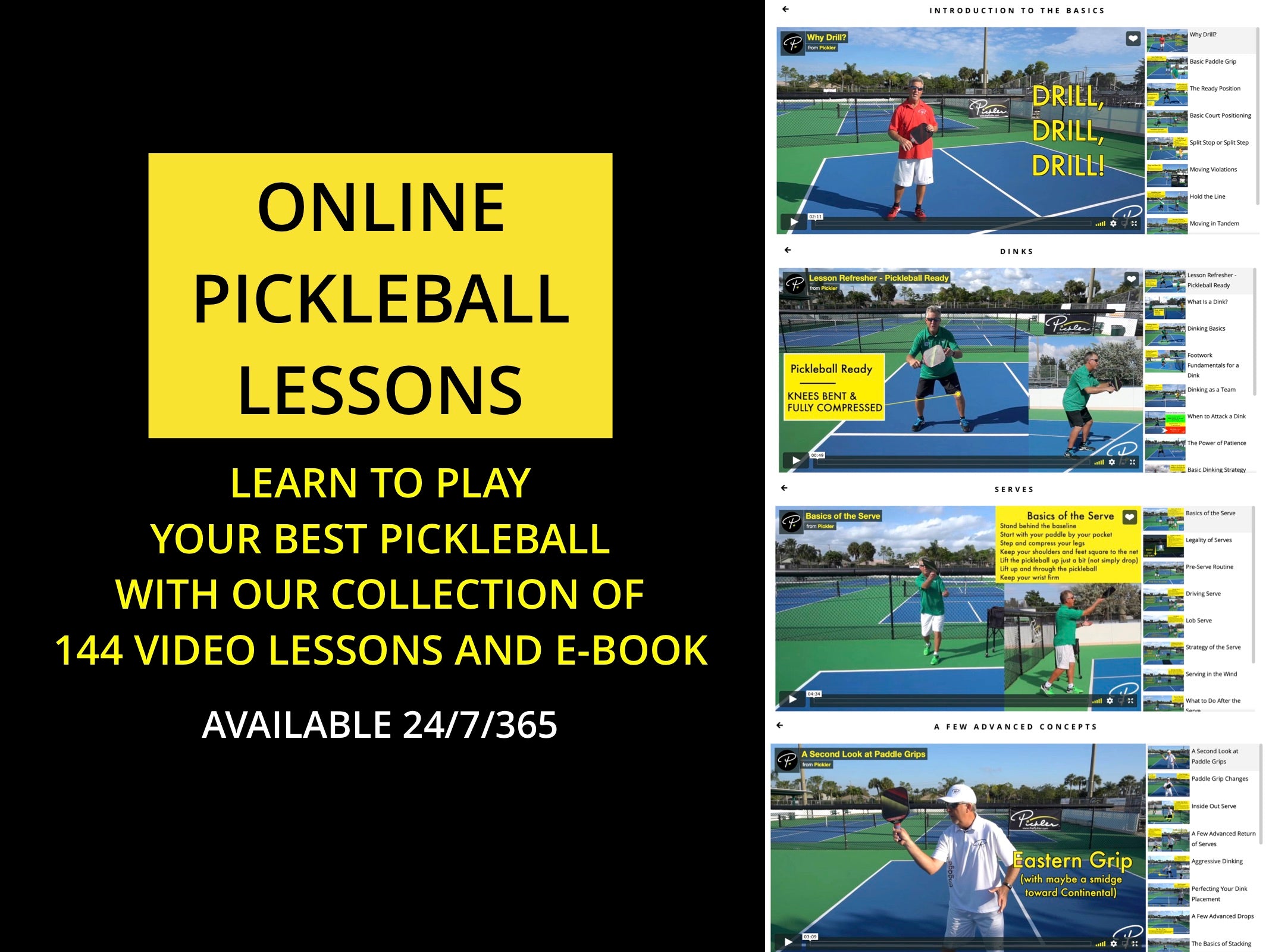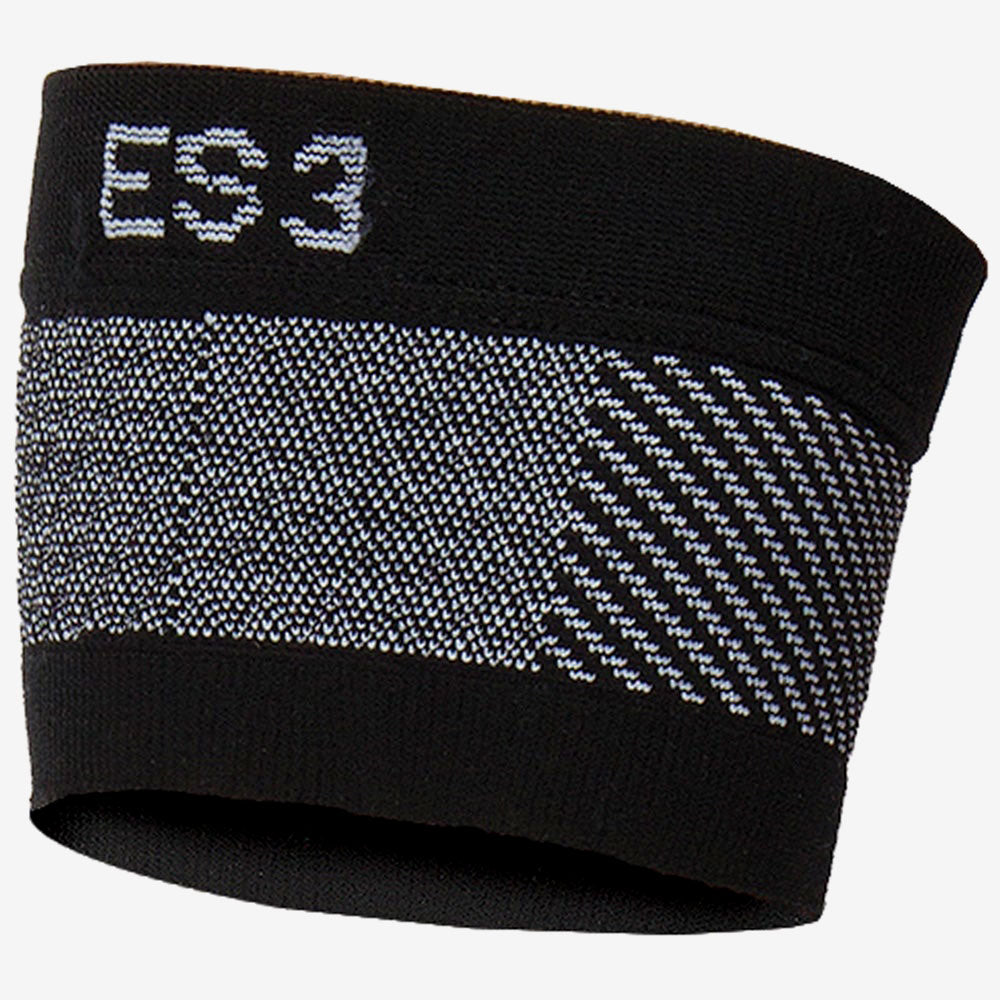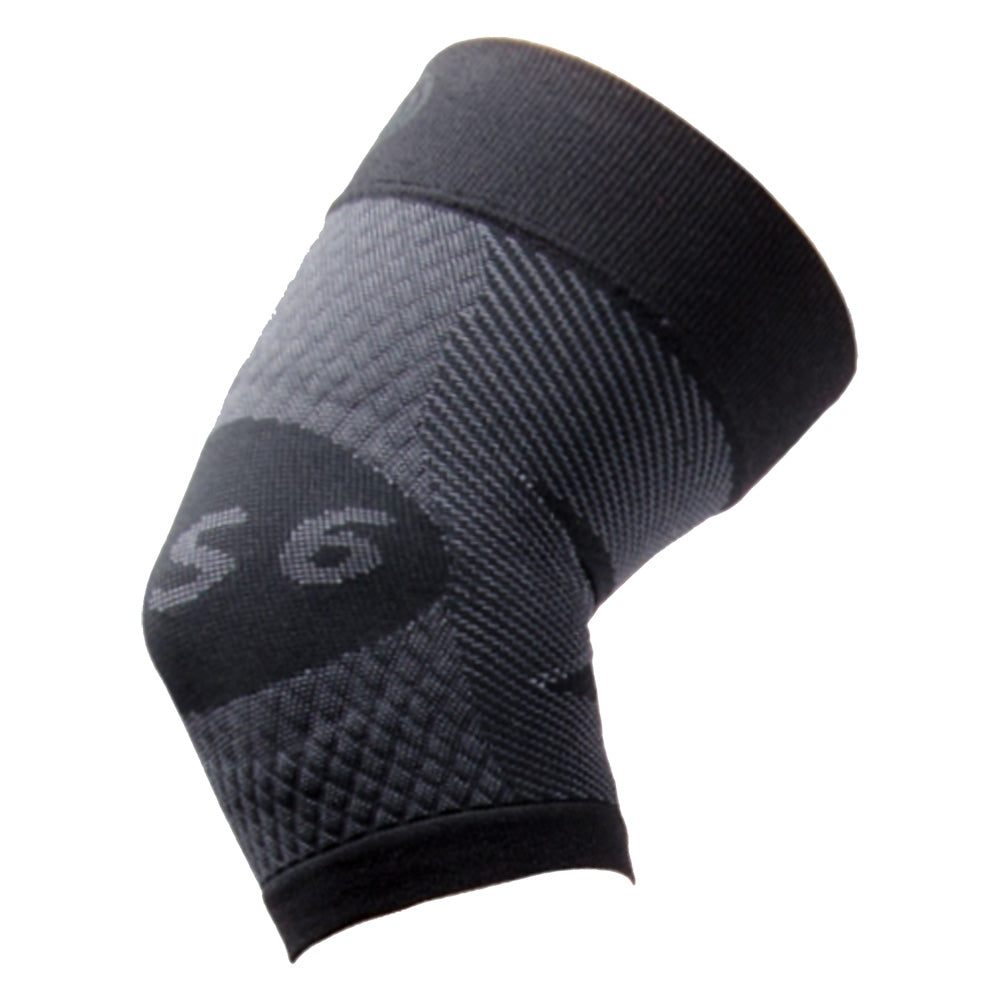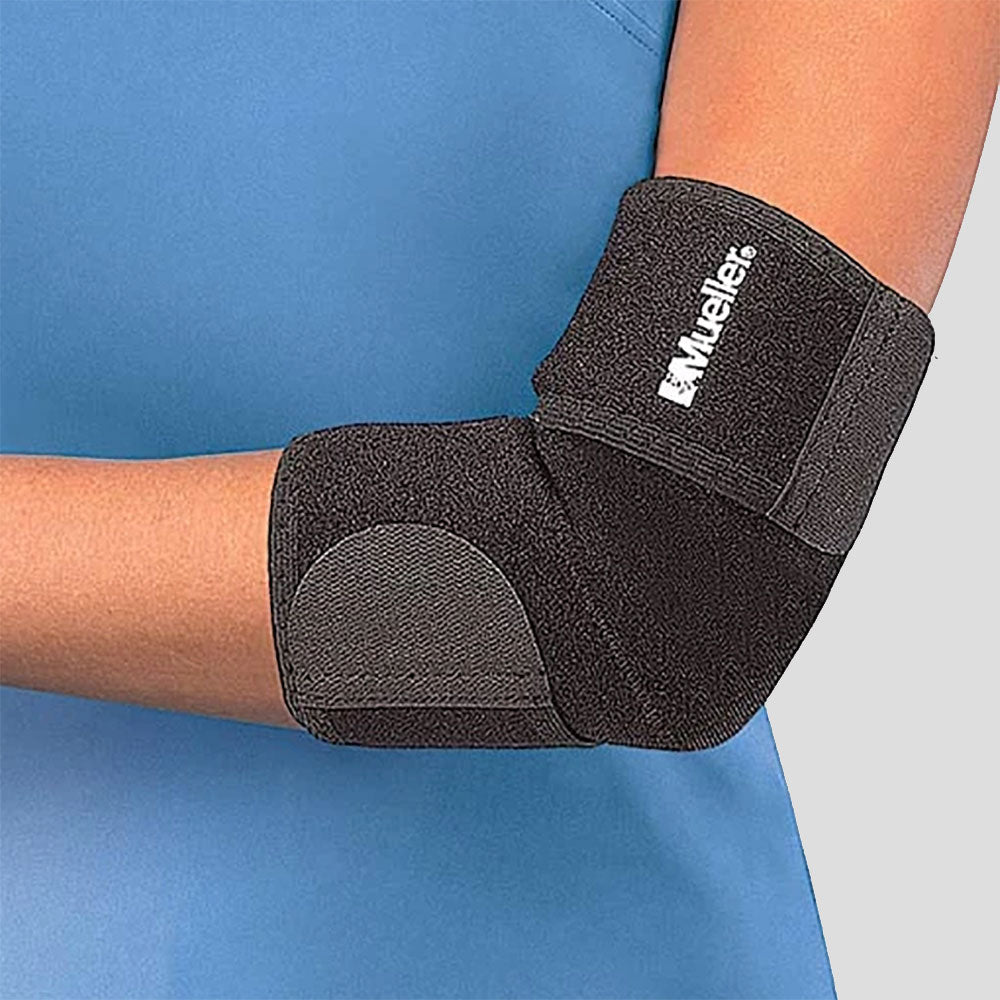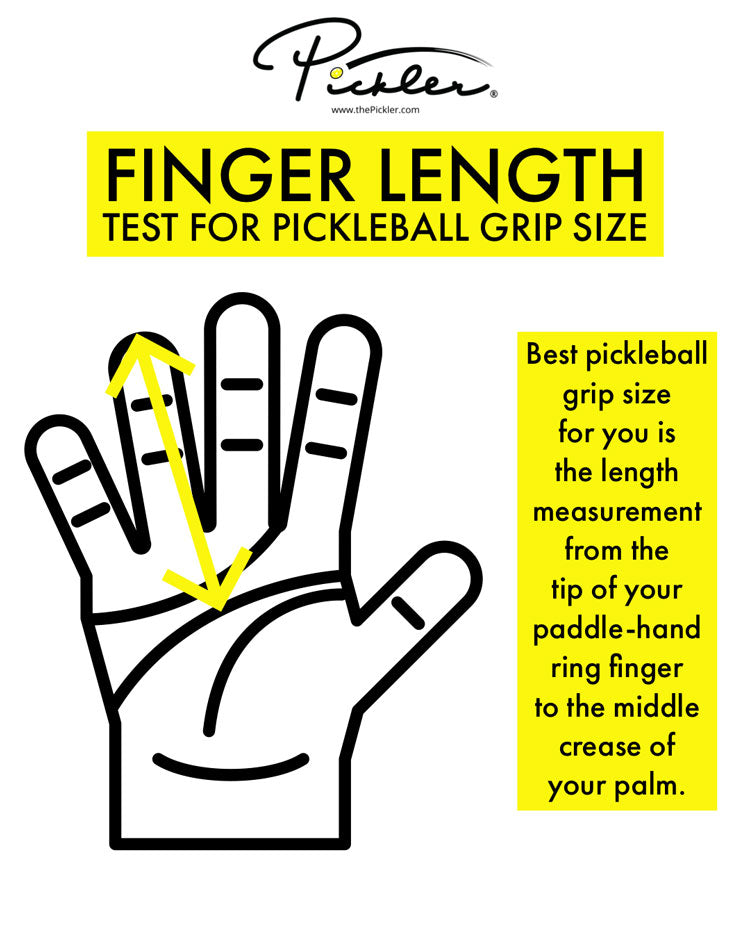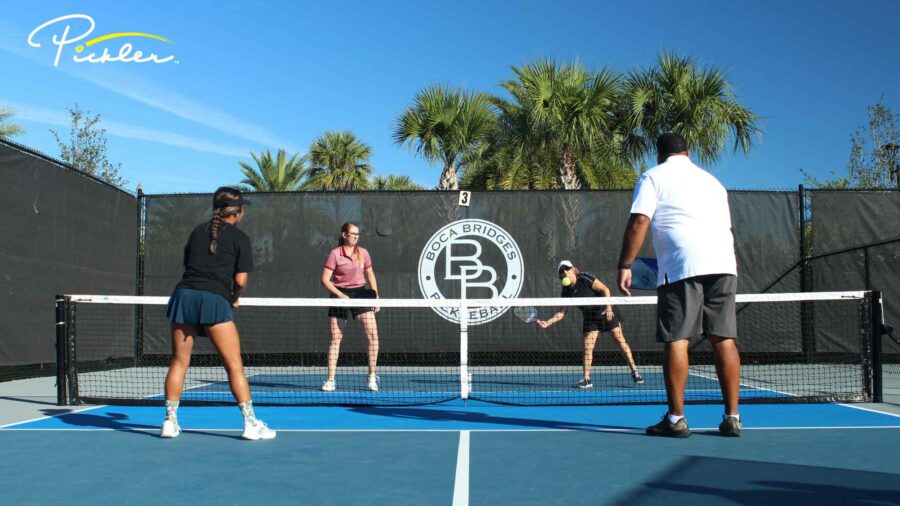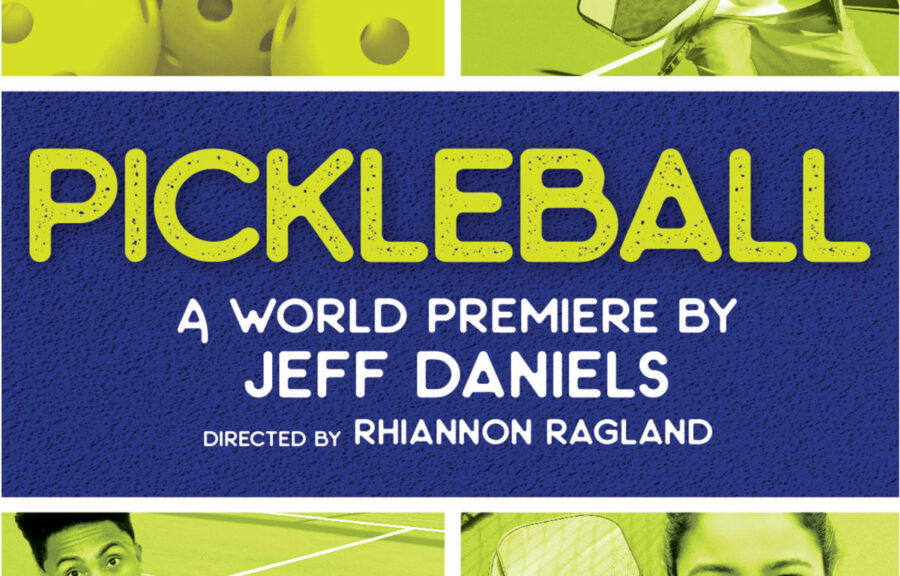Help! I have tennis elbow or pickleball elbow! How do I fix it? I want to get back out on the pickleball court! – Exclamation by a Pickleball Player with Elbow Pain
There are a ton of health and wellness benefits to playing pickleball. However, like any physical activity, there is a risk of injury on the pickleball courts. One such potential injury that you may encounter from playing pickleball is “tennis elbow” or “pickleball elbow” – known in the medical field as “lateral epicondylitis.”
This pickleball blog will break down the symptoms of pickleball elbow and the causes of pickleball elbow. This pickleball blog will then discuss several ways and methods to treat pickleball elbow and to keep you pain-free on the pickleball courts!
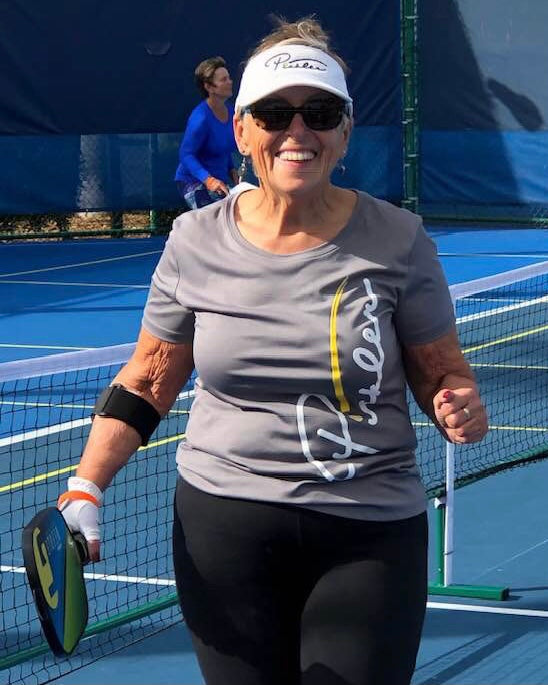
What Are the Symptoms of Pickleball Elbow?
Symptoms of tennis elbow or pickleball elbow include:
- Pain on the outside of your elbow and on the boney knob part of your elbow;
- Soreness, weakness and pain radiating to your forearm and wrist; and
- Difficulty gripping your pickleball paddle, shaking hands, turning a doorknob, holding a mug or lifting an object.
What Causes Pickleball Elbow?
Pickleball elbow is generally caused by overuse and muscle strain, as pickleball players rarely want to leave the pickleball court (they are passionate about pickleball!) and the sport of pickleball often involves repetitive motions. One such repetitive motion that is a common culprit for pickleball elbow is repetitive backhand shots (in particular, repetitive backhand shots with poor mechanics).
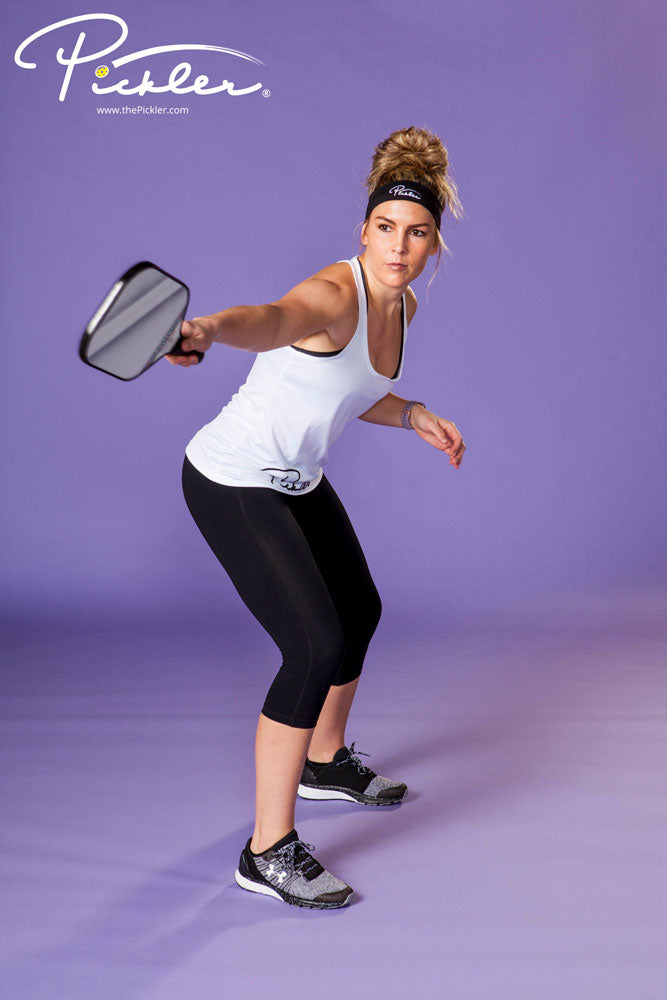
How Do You Treat Pickleball Elbow?
To treat pickleball elbow, try the following:
1. Stop and Rest
First and foremost, if you are experiencing pain in your elbow from playing pickleball, stop and rest. Oftentimes, pickleball elbow will heal on its own with a bit of rest.
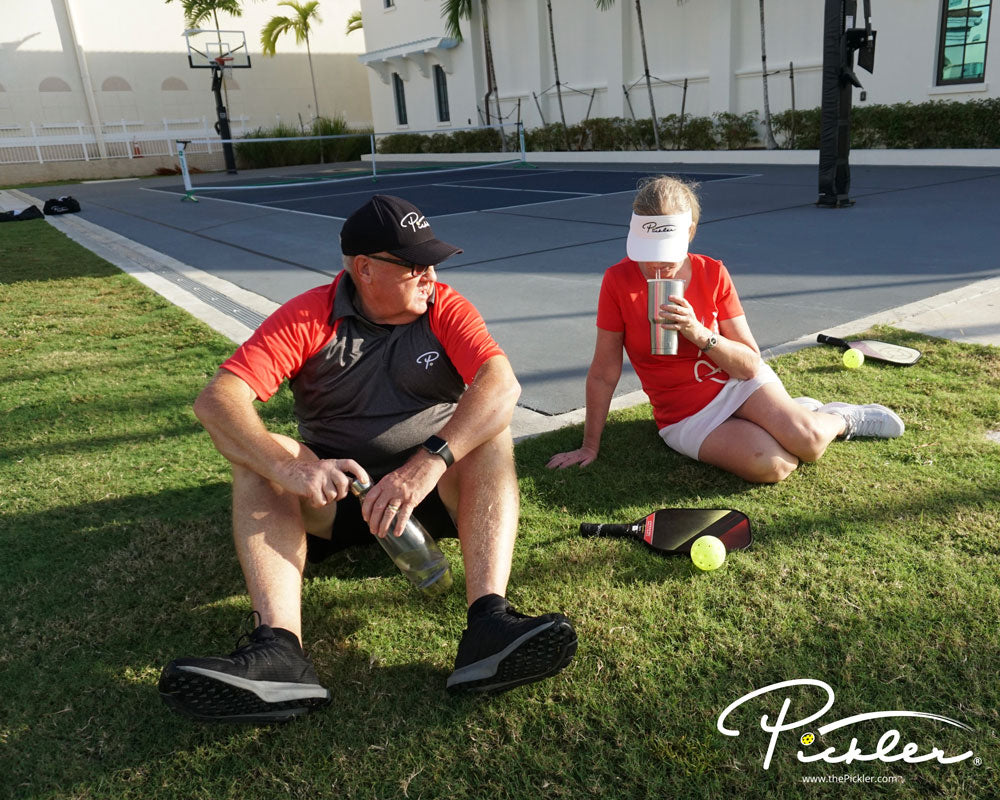
2. Ice Your Elbow
To reduce swelling (if any), ice your elbow for 10-15 minutes at a time every 3-4 hours. Be sure to put a cloth or other material between your skin and the ice.
3. Fix Your Mechanics
As mentioned above, one the primary causes of pickleball elbow is poor mechanics. Consider whether you are using the best mechanics out on the pickleball court, especially when using backhand shots, like a backhand drive, backhand volley, and backhand dink. Specifically, be sure to:
1. Hit the pickleball out in front of your body. It is so important to hit the pickleball out in front in your body. This enables you to relieve pressure on your elbow by using your strongest muscles—your legs and your core—in order to generate power in your shot. If you hit the pickleball behind your body, then you will put more pressure on your arm and your elbow in order to hit the pickleball because that is the only body part that you will be using to hit the pickleball. So, be sure to hit the pickleball out in front of your body.
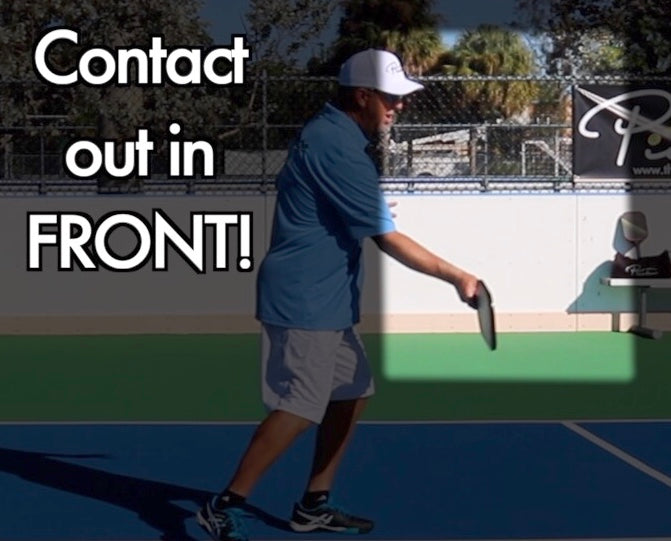
2. Limit your backswing – in other words, take a short backswing. Take a small backswing. If your backswing is too big, you run the risk of hitting the pickleball behind you because you will need more time to hit through your big backswing. Limit your backswing, which will help you keep the pickleball out in front of your body and, in turn, keep you from putting too much pressure on your elbow.
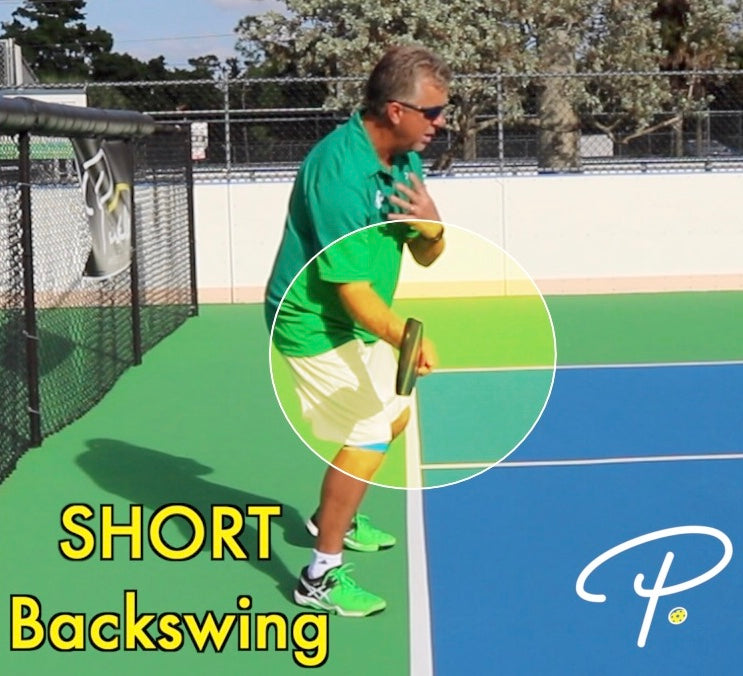
3. Move your feet. Move your feet so that you are in a position to strike the pickleball at a consistent contact point—which should, again, be out in front of your body. Do not be lazy with your feet. Move your feet, so that you will be able to hit the pickleball out in front of you.
4. Swing from the shoulder, rather than from your wrist or elbow. When hitting the pickleball, swing from your shoulder. Do not flick your wrist or snap your elbow too much, as this will put additional strain on your elbow.
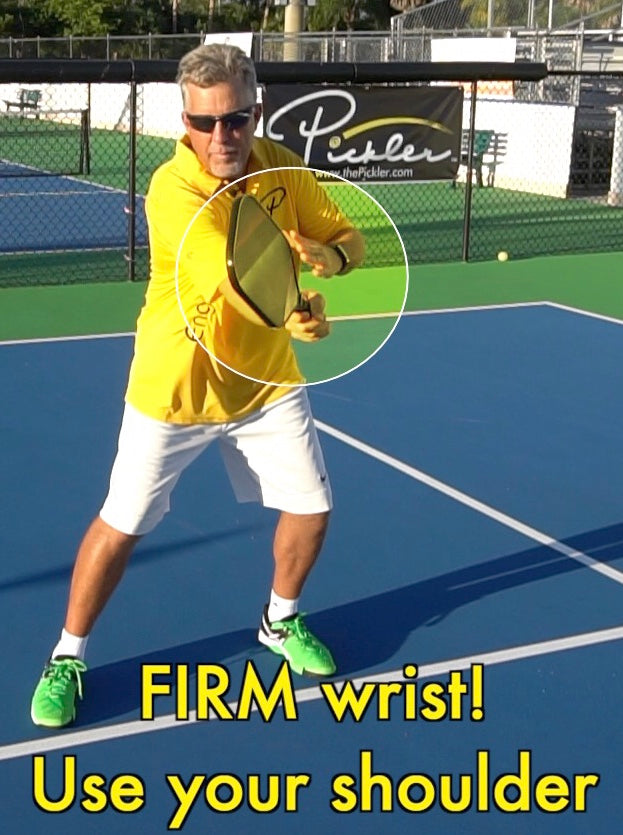
5. Use a loose grip on your pickleball paddle. It is important to have a loose, relaxed pickleball grip on the pickleball court – think a 4 out of 10 pickleball grip pressure. It is also important to hold the pickleball paddle more in your fingers and less in the palm of your hand. If you loosen your pickleball grip pressure and use more of your fingers to hold the pickleball paddle, you will help avoid pickleball elbow and the pain that comes with it. You will also find that you will have a softer touch with your pickleball paddle and more control over your shots on the pickleball court.
Lastly, consider whether you need a pickleball coach to help you in real-time correct your mechanics. To learn the correct mechanics and fundamentals, check out Pickler’s online pickleball video lesson collection called My Pro Pickleball Coach, which is available to you 24/7/365. My Pro Pickleball Coach is a fraction of the price of one clinic or lesson, and features over 140 video lessons (over 7 hours of instruction!), as well as a corresponding e-book, that breaks down every aspect of the sport of pickleball, including pickleball mechanics, fundamentals, strategy, advanced concepts, and drills.
4. Use an Elbow Brace
Try using an elbow brace to help protect the elbow from further injury. There are a number of braces and bands in the marketplace to help relieve pain from tennis elbow or pickleball elbow. These include:
The OS 1st ES3 Performance Elbow Sleeve – The OS 1st ES3 Performance Elbow Sleeve helps reduce swelling and pain from pickleball elbow. Enhanced with the Compression Zone Technology®, pickleball players will have three levels of graduated compression in this lightweight sleeve, which can comfortable be worn during pickleball play or for recovery. Plus, the material of this elbow sleeve is moisture wicking! To learn more about the ES3, click the picture below.
Mueller Elbow Support 4521 – The Mueller Elbow Support 4521 is an adjustable support that helps relieve pain from pickleball elbow. It is designed for comfort with its adjustable wraparound straps, as well as quality neoprene material that retains body heat for increased circulation – which helps and promotes pain relief, healing, and flexible joints. The Mueller Elbow Support 4521 is also easy to take on and off. To learn more about the Mueller Elbow Support 4521, click the picture below.
5. Take Over-the-Counter Pain Relievers
Consider whether you should take a non-steroidal anti-inflammatory – in other words, a pain reliever like ibuprofen. Do not overuse and carefully follow all instructions when using.
6. Use the Best Grip Size for You
Determining the best pickleball grip size for you can also be helpful in getting rid of pickleball elbow, as the wrong pickleball grip size may be a factor to elbow pain. There are three different “tests” for determining the best pickleball grip size for you:
- The Height Test
- The Finger Length Test
- The Index Finger Test
For the details on each of these grip size tests, check out Pickler’s 3 Pickleball Grips Explained blog.
7. Try a Kinetic Pickleball Paddle
There are some pickleball paddles – like the ProKennex pickleball paddles – that dampen the vibrations caused by hitting the pickleball. These ProKennex paddles feature a patented Kinetic System that absorb any energy transfer, to protect pickleball players from elbow pain and other harm. If you are experiencing elbow pain, then a ProKennex pickleball paddle may help. And, grab 10% off at Fromuth Pickleball with the code “10PICKLER“.
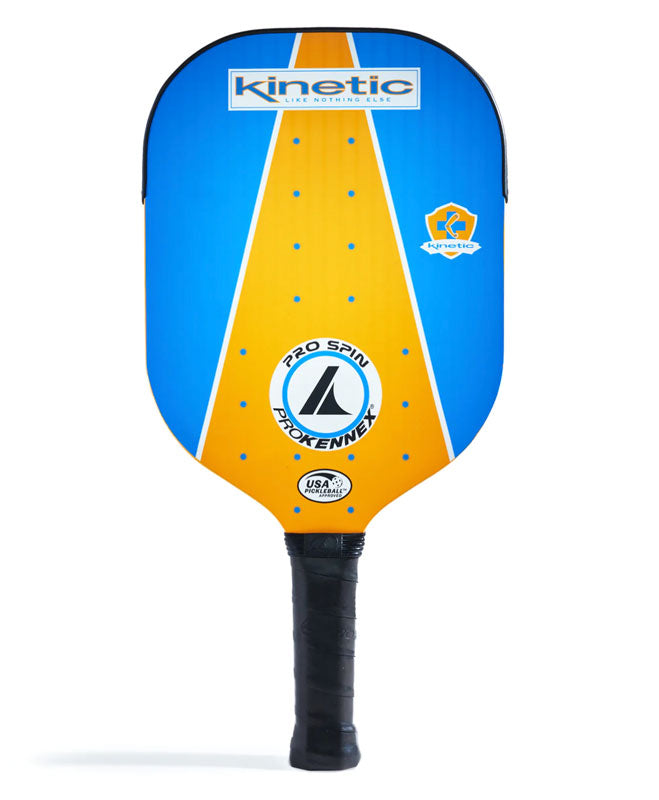
8. Improve Your Strength
Strong muscles can help prevent pickleball elbow. Work on improving your arm, shoulder, and forearm strength with bands, weights, and other strength-building exercises.
9. Improve Your Flexibility
Stretch! Something that is so frequently forgotten by pickleball players and other athletes. Stretch your muscles, including your arm, shoulder, and forearm muscles.
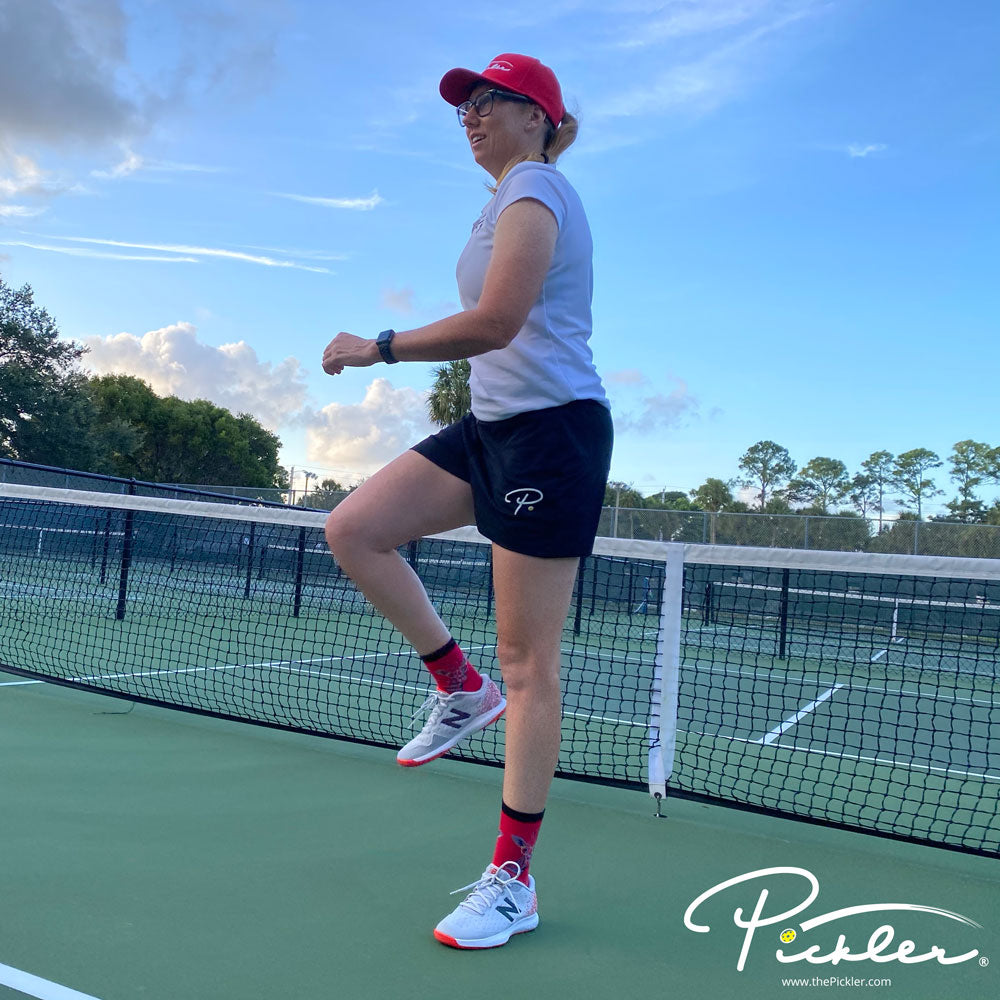
10. Go to Physical Therapy
If you are unable to do strength-building exercises or stretching exercises on your own, consider whether to work with a physical therapist to help you build strength and flexibility.
11. Check the Weight of Your Pickleball Paddle
If you use a heavier pickleball paddle (heavier than 8.3 ounces), then you may be putting unnecessary stress on your elbow with swinging a heavier pickleball paddle. Consider using a lighter pickleball paddle. However, if you decide to use a light pickleball paddle (lighter than 7.3 ounces), be careful not to overswing in an effort to generate additional power. Just like the story of Goldilocks and the Three Bears, consider using a paddle that is “just right” – which would be a midweight pickleball paddle (between 7.3 and 8.3 ounces).
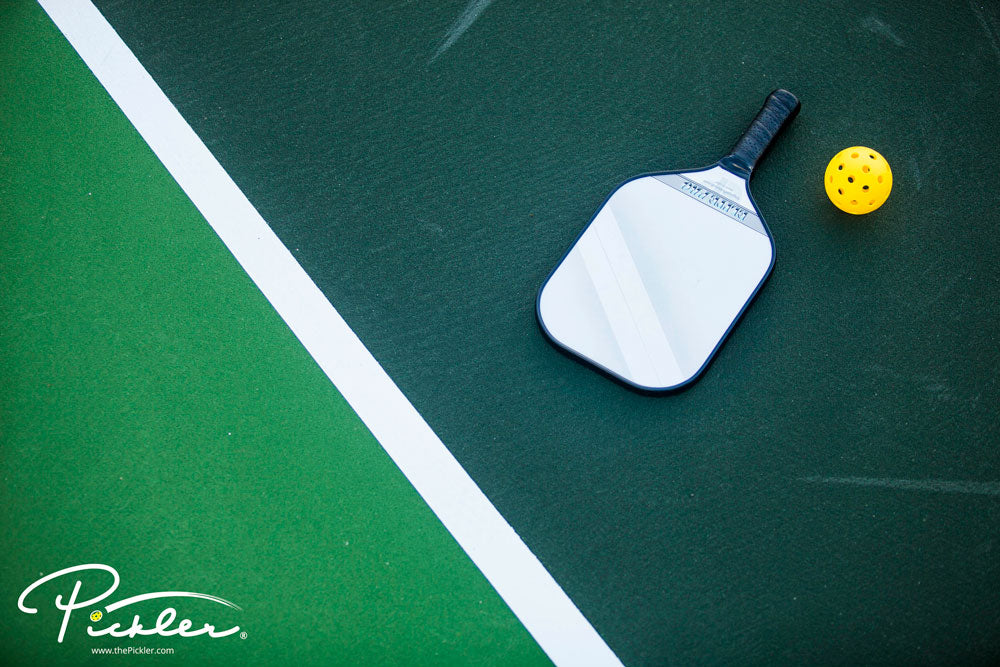
12. Go See a Doctor
If you are in pain, of course, go see your doctor for a proper diagnosis.
Practice Safe Pickleball!
Generally speaking, the sport of pickleball is easier on your body than other sports, like tennis, as the court is smaller and the paddle is smaller and lighter. As a result, the sport of pickleball has less risk of injury. However, pickleball is still a sport and still has some risk of physical injury. With that said, it is important to train your body to use the best mechanics on the pickleball court, as well as take care of your body off the pickleball court, so you can avoid pain and injury (like tennis elbow or pickleball elbow) and continue to play the game you love—pickleball, of course—as often as you’d like.
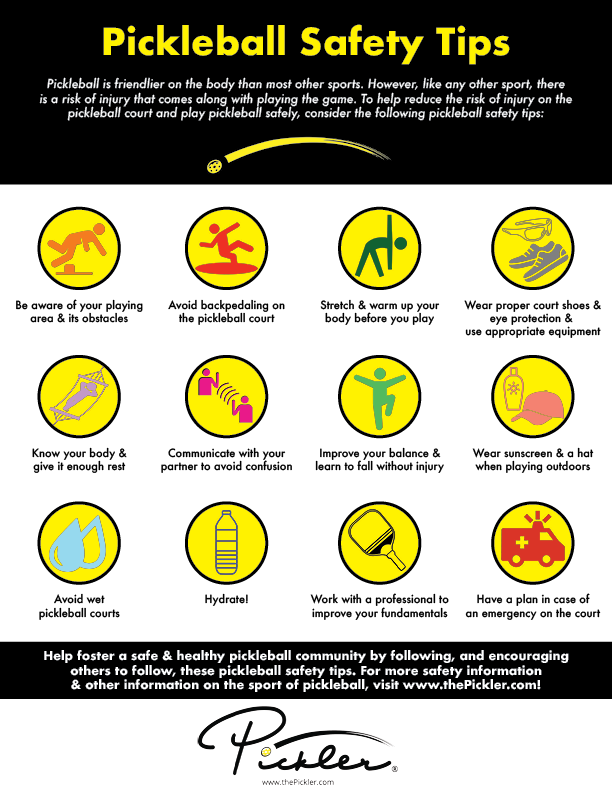
Disclaimer: The content in this pickleball blog is for informational purposes only. This pickleball blog is not intended to be a substitute for professional medical advice, diagnosis, or treatment, as Pickler is not a doctor. Always seek the advice of a qualified medical professional.
